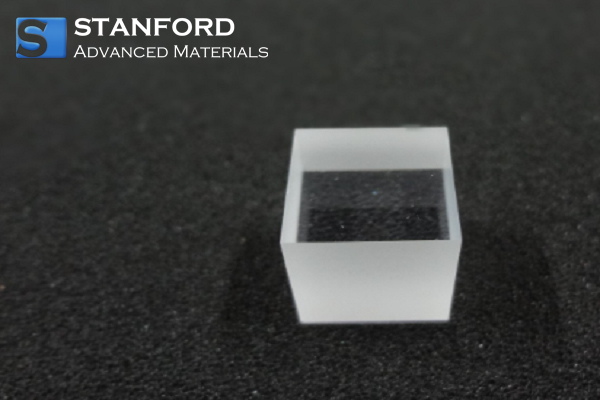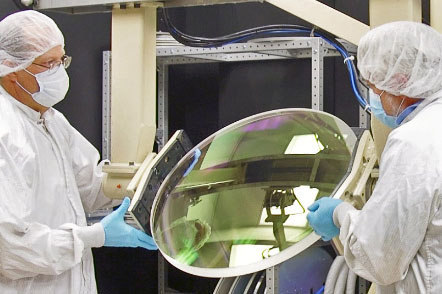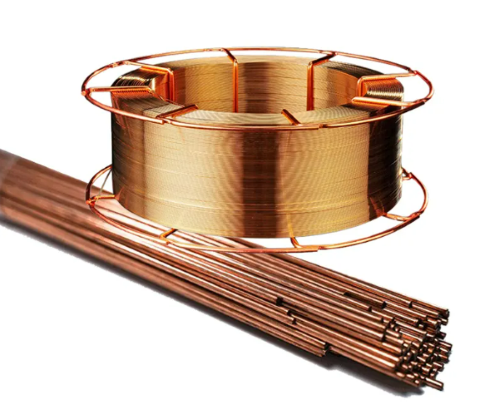The Comprehensive Guide to BGO Scintillation Crystals and Their Superior Advantages
1 Introduction
Scintillation crystals emit light flashes when high-energy particles such as X-rays interact with them, converting the kinetic energy of these particles into visible light. Inorganic scintillation materials are widely used for ionizing radiation detection. Over the past decades, scintillation materials have seen rapid growth in high-energy physics and medical imaging. Following the discovery of the scintillation phenomenon in bismuth germanate (Bi₄Ge₃O₁₂) and the application of high-density materials in detection fields, many research institutions have dedicated their efforts in the past decade to studying the properties and applications of Bi₄Ge₃O₁₂. The European Organization for Nuclear Research (CERN) used Bi₄Ge₃O₁₂ in the L3 detector as a scintillation material, which included 11,400 BGO crystals, each 22 cm long and weighing over 10 tons. This article introduces the unique properties and applications of bismuth germanate (BGO) crystals as scintillation materials.
Fig. 1 Bismuth Germanate (BGO) Crystal Substrates
2 Crystal Structure
The luminescent properties of BGO crystals are closely linked to their crystal structure. BGO belongs to the cubic crystal system and shares the same structure as the natural mineral Bi₄Si₃O₁₂ (bismuth silicate). Each unit cell contains four Bi₄Ge₃O₁₂ molecules. Bi³⁺ is surrounded by six GeO₄ tetrahedra and the nearest coordination is in a distorted oxygen octahedron. The Bi-O bond lengths are 0.219 and 0.267 nm, respectively. Bi³⁺ is a post-transition element with a filled shell configuration of 6s². The electronic energy levels of free Bi³⁺ and Bi³⁺ ions in the lattice include the ground state and excited states. Due to electrostatic and spin-orbit interactions in BGO, the energy gap between the ground and excited states is small, and the absorption transitions are 1s₀→3p₁ and 1s₀→1p₁. The 1s₀—3p₀ transition is forbidden due to the C₃ symmetry of Bi³⁺. The 3p₁→1s₀ transition dominates the emission spectrum of Bi³+, and the excitation spectrum corresponds to two peaks corresponding to the absorption transitions. The large Stokes shift in absorption and emission wavelengths originates from non-radiative transitions.
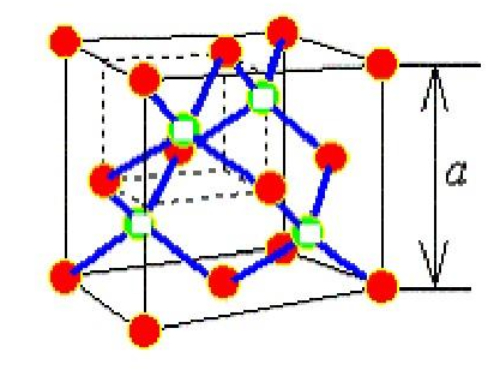
Fig. 2 Bismuth Germanate (BGO) Crystal Structure
3 Performance
3.1 Detection Efficiency
BGO has a high detection efficiency, especially for high-energy γ-rays. Due to its high density (about 7.13 g/cm³) and large atomic number (with bismuth having an atomic number of 83), BGO efficiently absorbs γ-rays and X-rays, making it ideal for radiation detection.
3.2 Sensitivity
BGO exhibits good sensitivity, particularly for high-energy radiation detection. Its high atomic number allows it to absorb and convert γ-ray and X-ray energy effectively, resulting in excellent sensitivity for these types of radiation. However, its light output is relatively low, which may limit sensitivity compared to some other scintillators, especially in low-energy radiation detection.
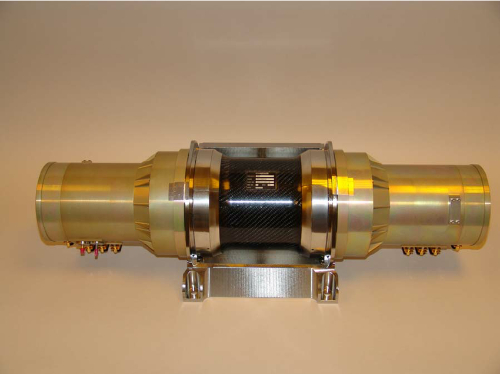
Fig. 3 BGO detector
3.3 X-ray Stopping Power
BGO demonstrates strong X-ray stopping power. Its high density and atomic number allow it to efficiently absorb X-rays and convert them into visible light, making it ideal for high-energy X-ray detection applications such as PET scanning.
3.4 Radiation Damage
BGO has relatively low radiation damage. Its high atomic number and density give it strong radiation resistance, allowing it to maintain performance in high radiation environments. However, long-term exposure to high radiation can lead to a decrease in light output, often manifesting as reduced scintillation yield.
3.5 Afterglow
BGO has a low afterglow effect. Despite its relatively long decay time, its afterglow is weak, meaning that it does not emit light for a prolonged period after the radiation stops. This is advantageous in applications requiring clear signals without interference from lingering light emissions.
3.6 Light Output
BGO has a relatively low light output, with a yield of about 10,000 photons/MeV, which is much lower than some other scintillators like NaI(Tl), which can reach 38,000 photons/MeV. While its light output is lower, BGO excels in radiation absorption and high-efficiency detection, especially for high-energy γ-rays.
3.7 Luminescence Efficiency
BGO's luminescence efficiency is moderate. It is lower than that of scintillators like NaI(Tl), primarily due to the unique structure and scintillation mechanism involving electronic energy transfer and the nature of the luminescent centers. Nevertheless, BGO remains effective in applications where high radiation absorption and strong γ-ray detection performance are required.
3.8 Time Resolution
BGO has relatively poor time resolution due to its longer scintillation decay time, typically in the range of 300-600 nanoseconds. This slower response makes it less suitable for applications requiring fast timing resolution, such as fast particle detection, but it is well-suited for applications like PET scanning and high-energy radiation detection that do not demand rapid response times.
3.9 Temperature Effects
BGO's performance is sensitive to temperature variations. Temperature changes can affect its scintillation properties, leading to a decrease in light output. High temperatures, in particular, can reduce both light yield and luminescence efficiency, requiring temperature control in applications where BGO is used.
4 Preparation
4.1 Czochralski Method for BGO Crystal Growth
The Czochralski method is widely used for single-crystal growth and was initially developed for semiconductor materials. This method can also be employed to grow BGO crystals. The BGO crystal growth involves heating a mixture of high-purity Bi₂O₃ and GeO₂ to their melting points, forming a melt. A small BGO seed crystal is immersed into the melt and slowly pulled out, allowing the crystal to grow as it is drawn. The process requires precise control of temperature, pulling speed, and the composition of the melt to ensure crystal uniformity and quality. This method is challenging, particularly for growing large, high-quality BGO crystals due to the complex crystal structure and phase transition behaviors of BGO.
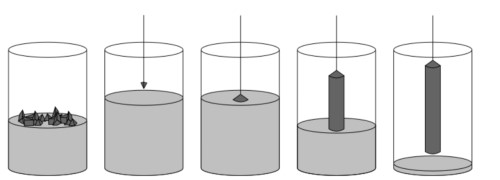
Fig. 4 Czochralski Method
4.2 Bridgman Method for BGO Crystal Growth
The Bridgman method has been optimized for the production of high-quality BGO crystals. This method enables the growth of large, high-quality BGO crystals with sizes up to 25 cm and weights of 5 kg. It requires precise control of the temperature to within ±0.5°C to prevent crystal defects. The purity of the starting materials is also critical, with rigorous control of impurities to minimize radiation damage.
4.3 Float-Zone Method for BGO Crystal Growth
The Float-Zone method is another technique for single crystal growth, where a molten zone is created using a high-frequency electromagnetic field without a crucible. While less commonly used for BGO due to its high melting point, this method is employed in research applications for producing small, high-purity BGO crystals.
5 Applications
5.1 High-Energy Particle Detection
BGO is an excellent scintillation crystal for detecting high-energy particles and radiation such as γ-rays and X-rays. It emits blue-green fluorescence when high-energy particles or rays interact with it. The intensity and position of these fluorescent signals can be recorded and analyzed to determine the energy and position of the incoming particles, making BGO widely used in particle detectors for high-energy physics, cosmic ray detection, and medical imaging (such as PET scans)
5.2 Nuclear Medicine Imaging
In nuclear medicine imaging, BGO plays a critical role, especially in PET (Positron Emission Tomography) and SPECT (Single Photon Emission Computed Tomography). BGO can effectively convert high-energy radiation into visible light, making it ideal for use in these imaging techniques. However, its high cost remains a factor in the price of PET scanners, and efforts to improve optical quality and reduce scattering particles are ongoing.
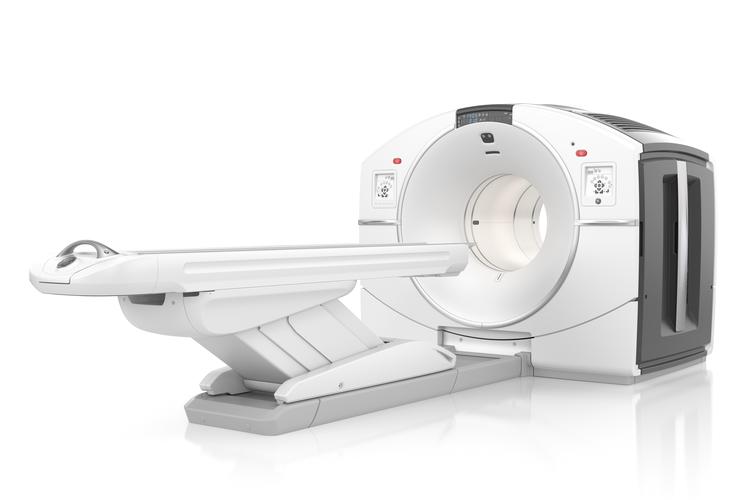
Fig. 5 PET Scanner
5.3 Particle Physics Experiments
In particle physics experiments, BGO crystals are used to detect invisible high-energy particles and radiation. For example, in the L3 detector at CERN, BGO scintillation crystals are used to monitor the energy released during particle collisions, providing valuable data for analyzing particle interactions and exploring the fundamental laws of particle physics.
6 Conclusion
BGO scintillation crystals are invaluable in high-energy radiation detection, particle physics, and medical imaging. Despite challenges like lower light output and slower time resolution, their high radiation absorption capacity, robustness, and efficiency in detecting γ-rays make them indispensable in many applications, particularly in complex high-energy environments. Their unique properties and versatile applications continue to drive research and innovation in these fields.
Related Reading:


